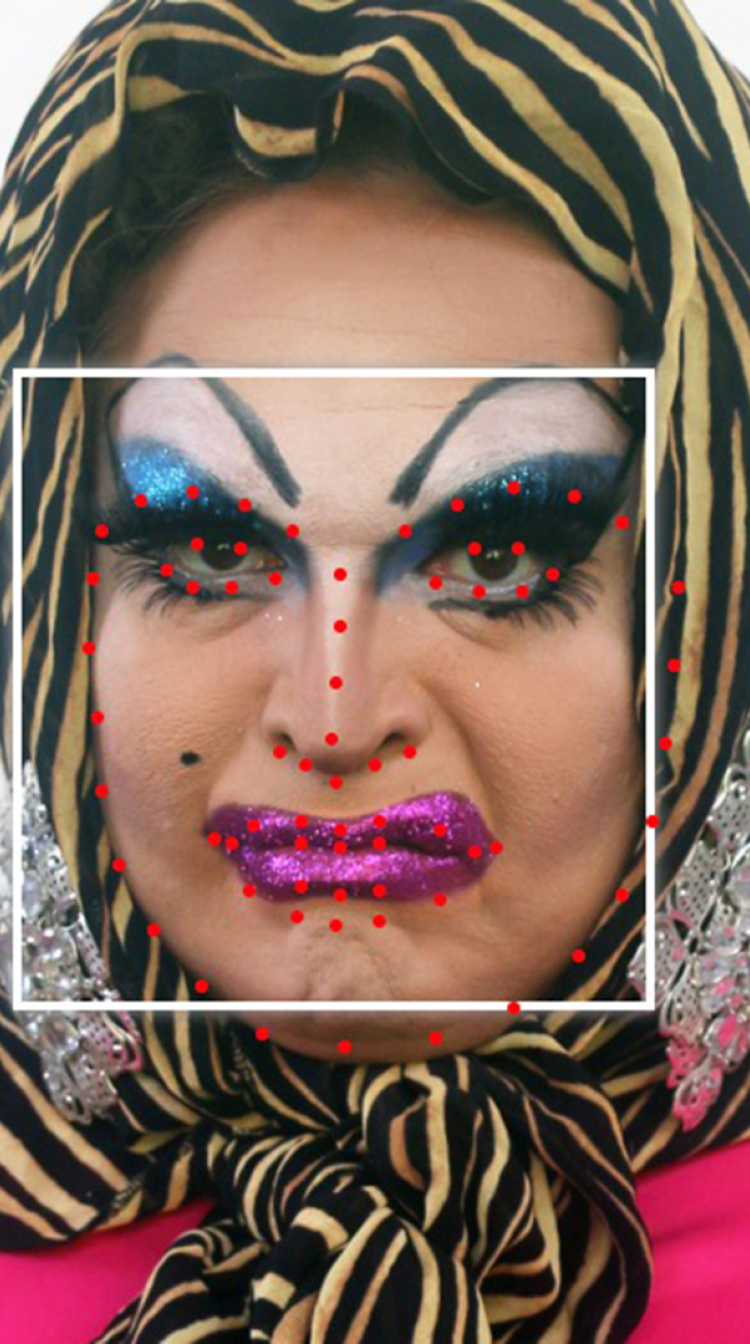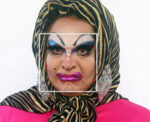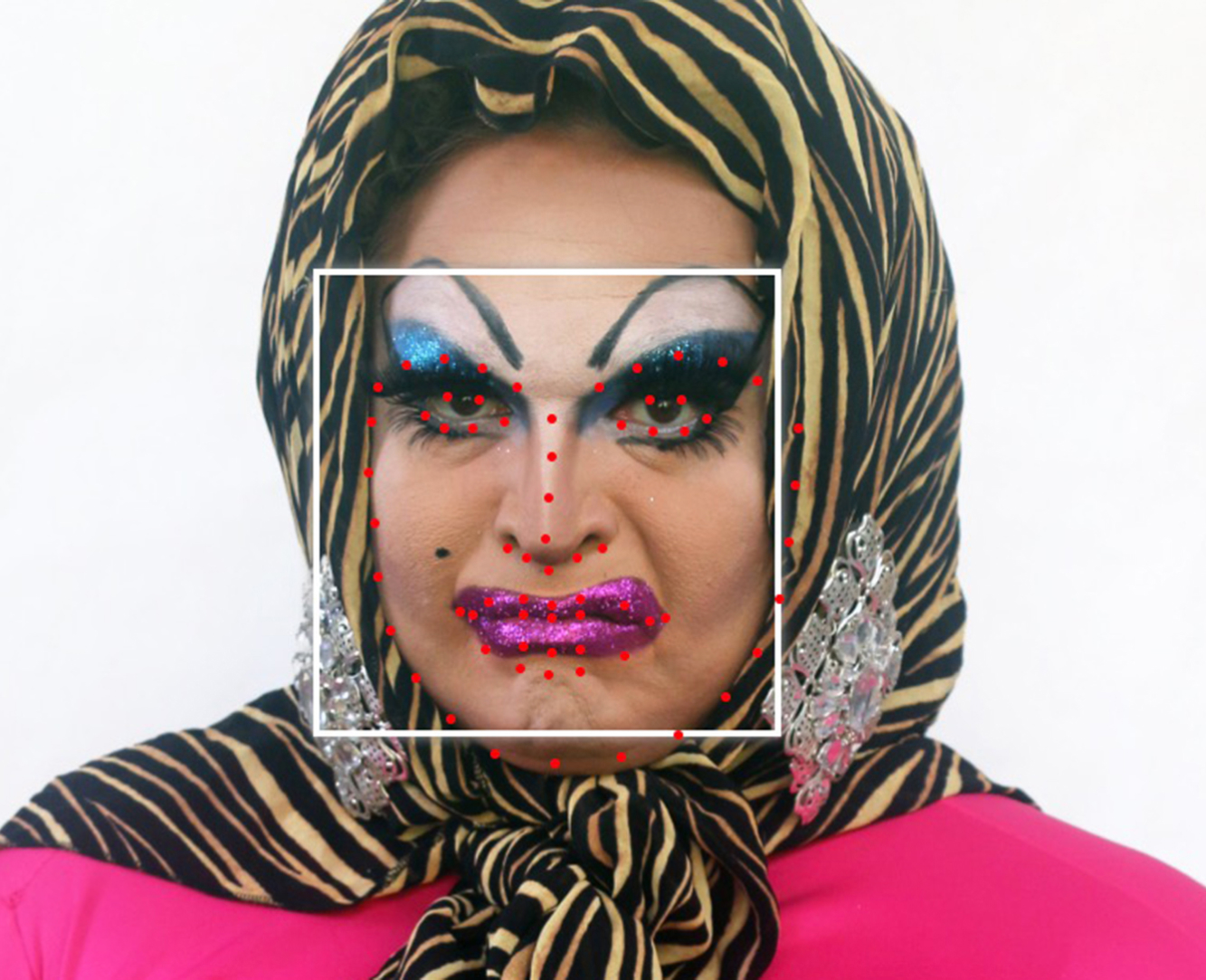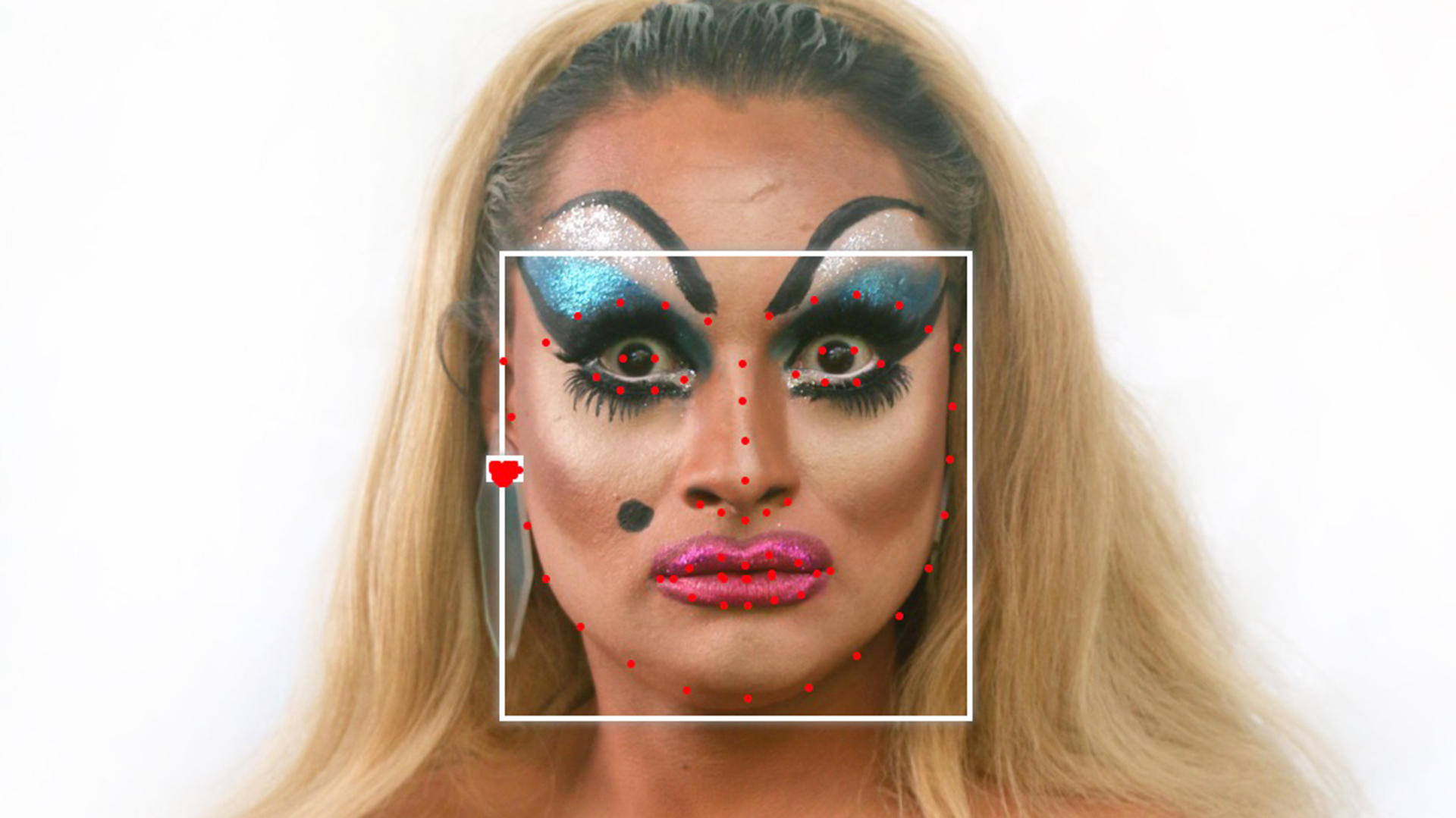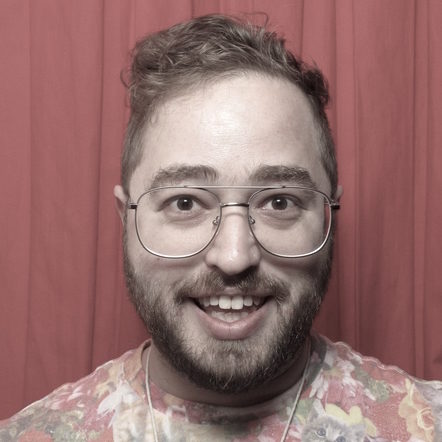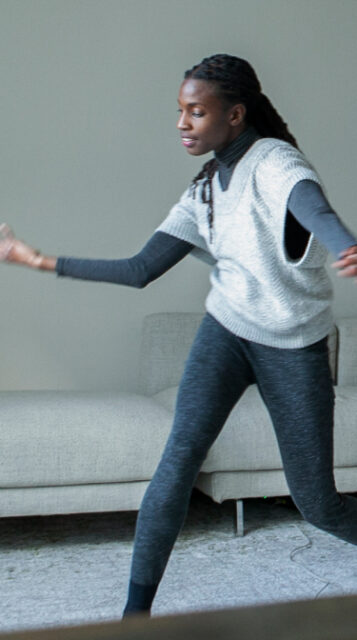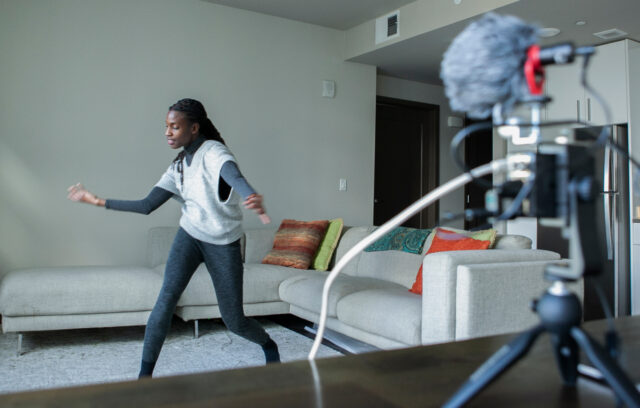How do you characterize the media you work in?
I work in digital media and performance.
How does your practice engage with technology?
I take consumer-oriented technological tools that are readily at hand and use them in ways that go against their intention, or the intention of their creators, in order to think critically about the cultural impact of technology. That might involve database pollution or hacking Wi-Fi routers to put people in captive portals. I think of this mode of working as a form of play—of poking, prodding, and finding loopholes.
What was your focus during your time at Eyebeam?
During the Eyebeam fellowship I focused on a portrait project in which I created what I called an “anti-data set” of photographic portraits of drag performers. I asked each participating drag performer to do one typical out-of-drag photo, one drag look, and one recreation of a look based on Divine. The project tested the limits of facial recognition algorithms—which are often confounded by drag makeup—while offering subversive tactics for countering various forms of face-based surveillance. In addition to taking photographs, I interviewed the performers about their experiences with facial recognition on social media.
